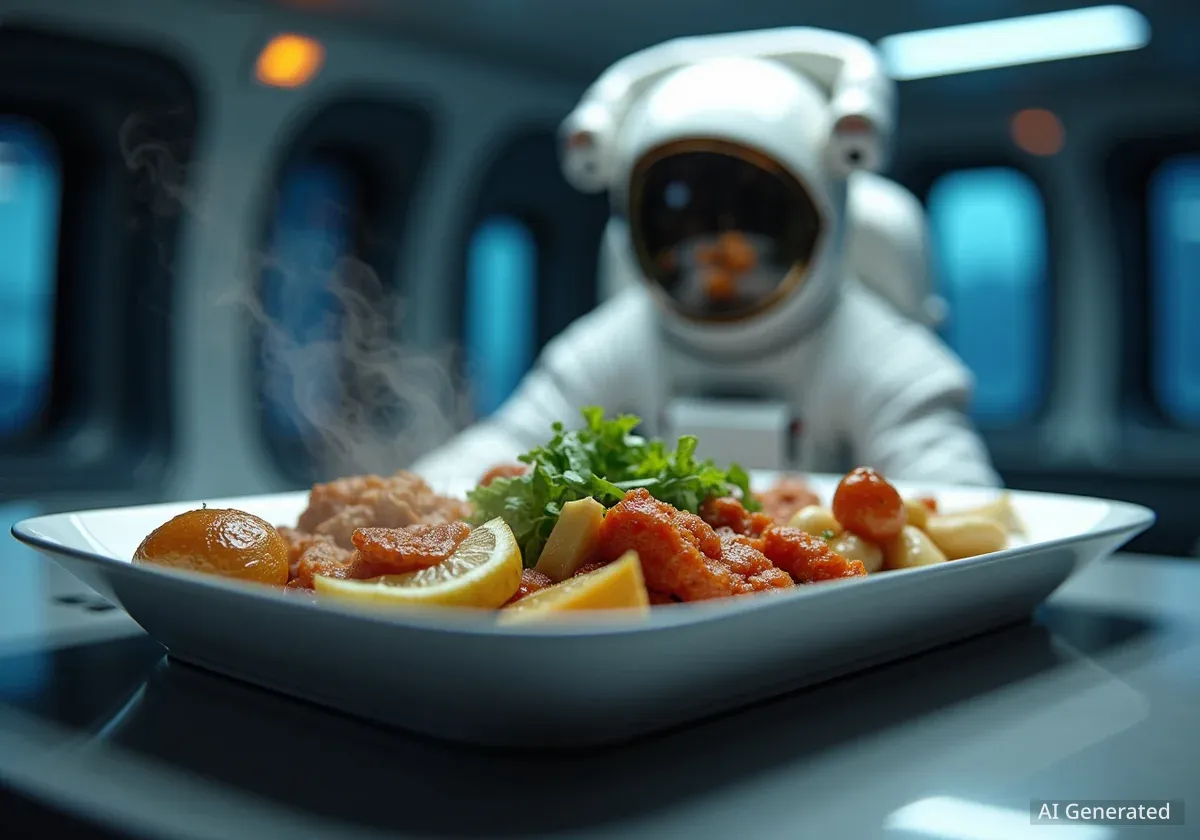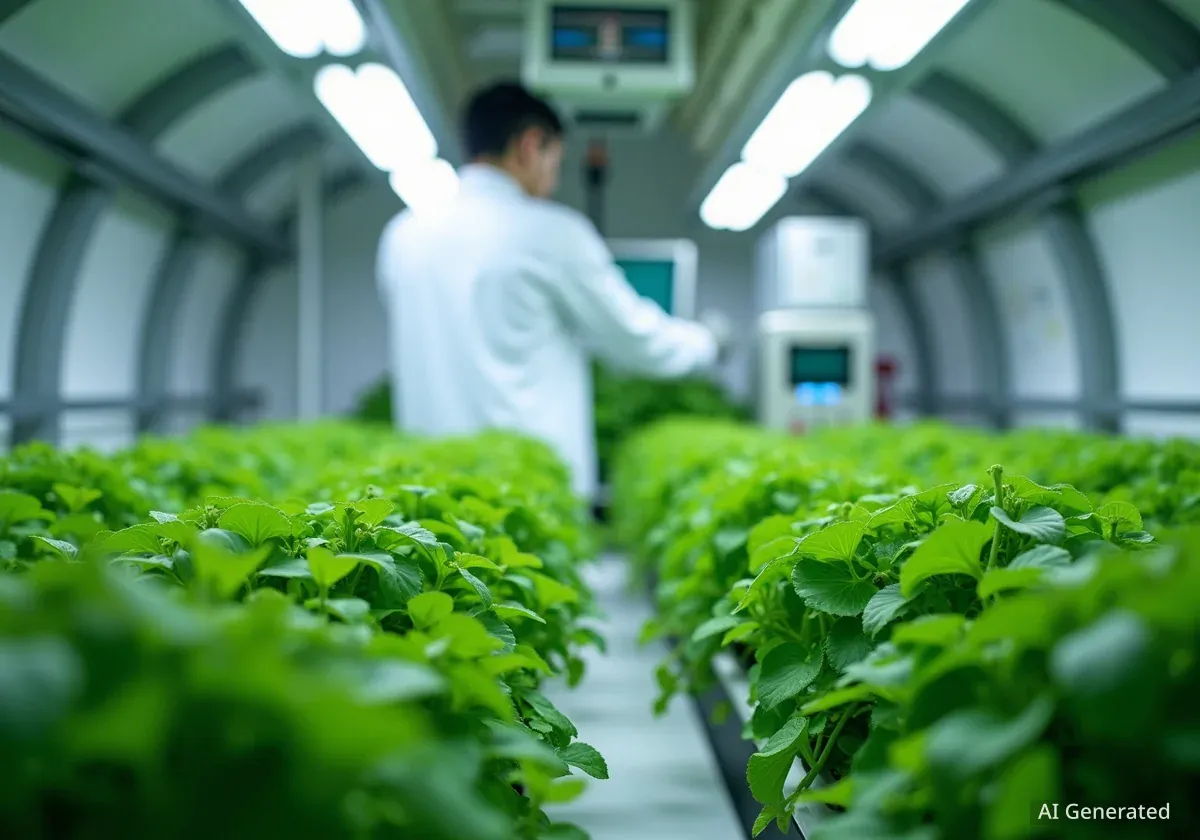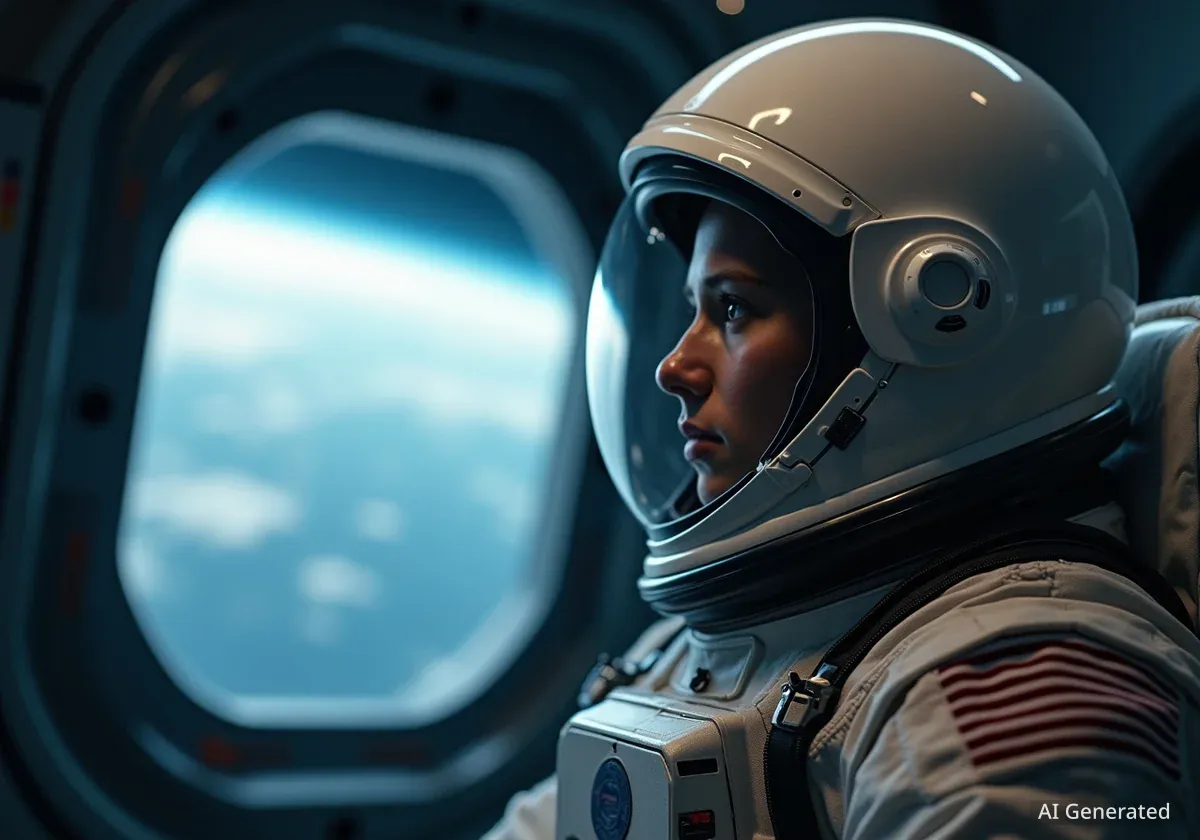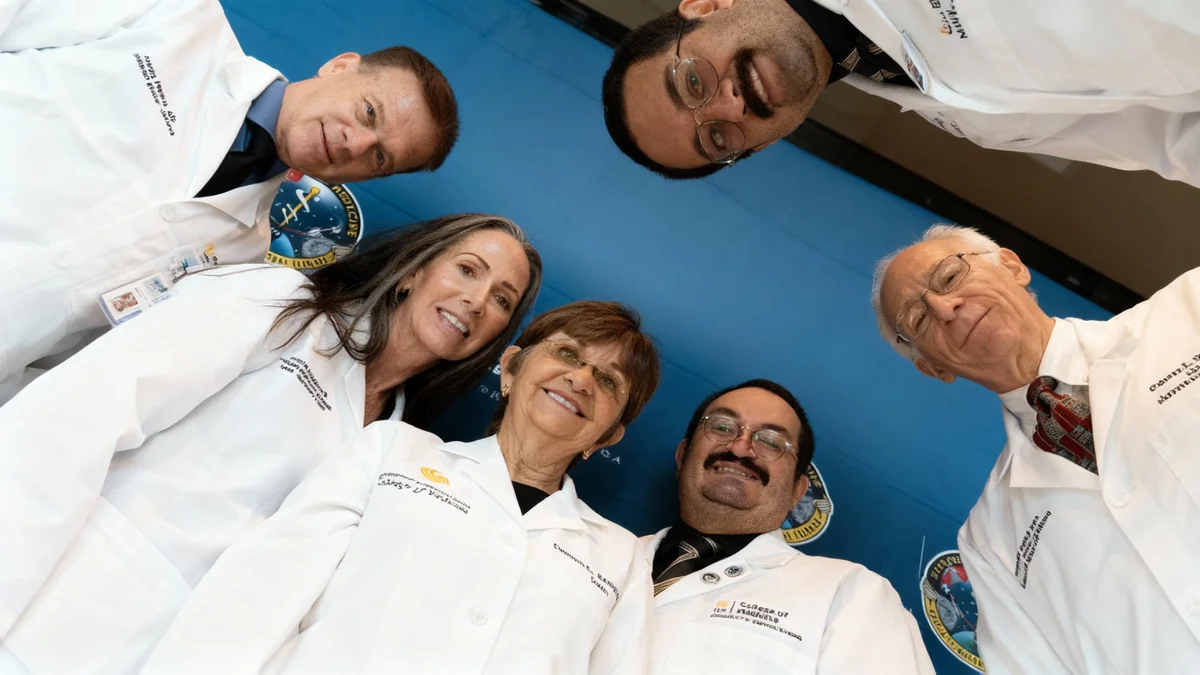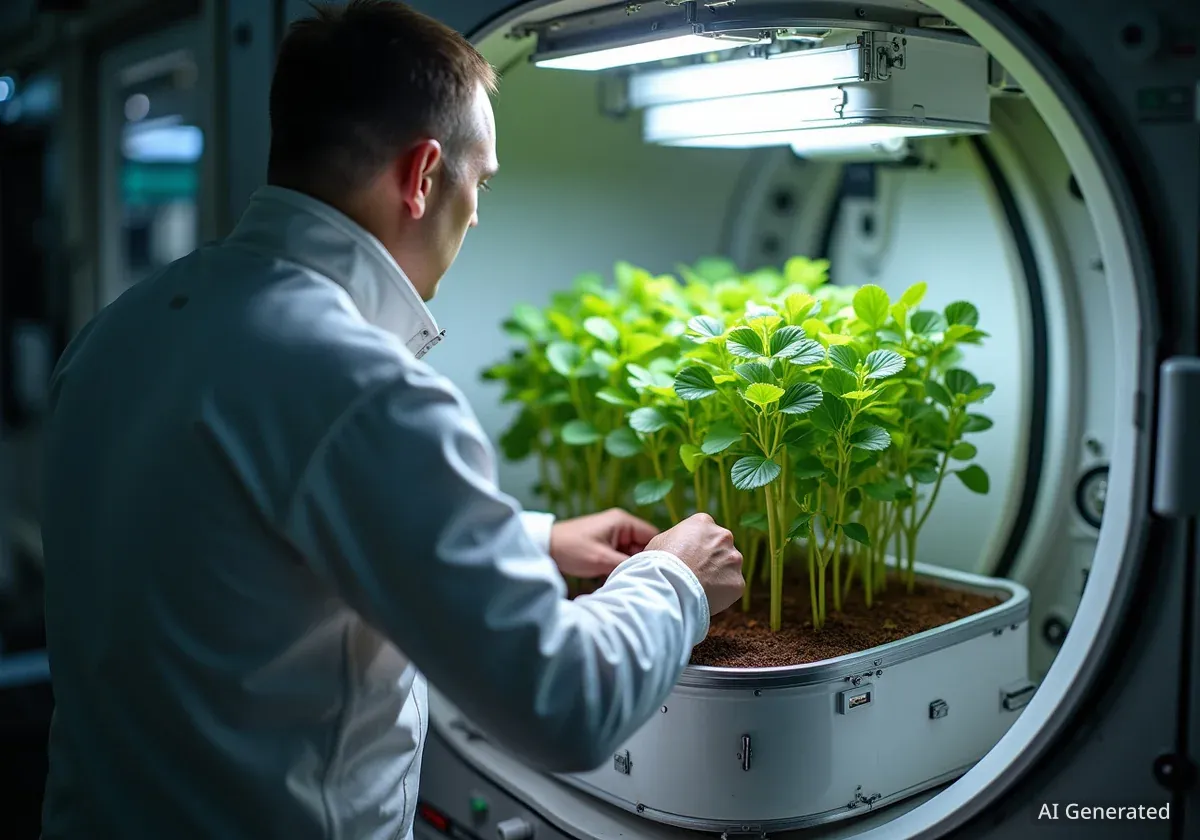A new study reveals that simulated space environments significantly alter how we perceive food, making aromas less intense while heightening sensations like spiciness. These findings are critical for developing more palatable food for astronauts on long-duration missions to the Moon and Mars.
Researchers found that in a simulated microgravity setting, participants reported a noticeable decrease in the intensity of retronasal aromas—the scents perceived when chewing food. Conversely, the perception of mouthfeel, particularly the pungency from spicy foods, was enhanced. This research helps explain why astronauts often crave spicy food and provides a scientific basis for designing meals that remain enjoyable in space.
Key Takeaways
- A study using a simulated microgravity environment found that the perception of aroma intensity is significantly lower than in normal conditions.
- In contrast, the intensity of mouthfeel sensations, such as pungency (spiciness), was perceived as higher in the simulated space environment.
- The dulling of aroma is likely caused by fluid shifts toward the head in microgravity, which can lead to nasal congestion and block aroma receptors.
- These findings are essential for NASA's Artemis program and future long-term missions, aiming to combat menu fatigue and ensure astronaut nutrition and well-being.
The Challenge of Eating in Space
As NASA plans for sustained human presence on the Moon by 2030 and missions to Mars by 2040, ensuring astronaut health is a top priority. A significant challenge during long spaceflights is nutrition, as astronauts often suffer from appetite loss, weight reduction, and "menu fatigue."
One of the primary causes is a change in how they perceive taste and smell. Previous reports from space missions have consistently indicated that food tastes blander in microgravity. This new research, published in npj Science of Food, delves deeper into specific sensory changes to better understand the problem.
Why Sensory Perception Matters in Space
The enjoyment of food is crucial for psychological well-being, especially in isolated and stressful environments like a spacecraft. When food becomes monotonous or unappealing due to altered senses, astronauts may not consume enough calories, leading to nutritional deficiencies and decreased performance on critical tasks.
Simulating a Space Environment on Earth
To investigate these sensory shifts without going to space, researchers created an immersive, simulated environment. The study involved 12 highly trained sensory panelists who evaluated samples under two different conditions.
The first was a neutral control environment with standard seating. The second was a space simulation featuring a 180° screen displaying a view of Earth from space and a reclining chair that placed the participant in a position simulating microgravity. This reclining position helps redistribute body fluids similarly to how they shift in space.
Testing Aroma and Mouthfeel
The panelists were tasked with evaluating two distinct sensory categories:
- Retronasal Aromas: These are the aromas perceived through the back of the throat while chewing. The samples included common spices like coffee beans, coriander seeds, cumin, garlic, and aniseed.
- Mouthfeel Sensations: These are tactile and chemical sensations in the mouth, such as pungency or astringency. Samples included red wine (astringent), chili (pungent), ethanol (warming), a hot muffin (physical heat), and ice water (cold).
During the tests, participants' subconscious biometric responses, including facial expressions, heart rate, and head movements, were recorded and analyzed using specialized software. This provided an objective layer of data to complement the panelists' self-reported intensity ratings.
The simulated microgravity position used in the study (0–170° recline) has been shown to produce cognitive and physiological responses similar to those experienced by astronauts in actual spaceflight.
Aroma Fades While Spiciness Intensifies
The results of the study showed a clear and significant divergence in how aroma and mouthfeel are perceived in the simulated space environment.
Diminished Sense of Smell
When participants were in the microgravity position, their perception of retronasal aroma intensity was significantly lower compared to the neutral environment. This finding aligns with anecdotal reports from astronauts and previous studies on orthonasal aroma (smelling through the nose directly).
"The larger decrease in coffee may be explained by its complex and highly volatile aromatic profile, which relies strongly on the efficient retronasal pathway of perception," the study authors noted.
The leading theory for this sensory dulling is the headward fluid shift that occurs in microgravity. This can cause nasal congestion, reducing airflow and blocking aroma molecules from reaching the olfactory receptors in the nasal passages.
Heightened Mouthfeel Sensations
In contrast to aroma, the intensity of mouthfeel sensations was generally perceived as higher in the simulated space environment. The most significant increase was observed for pungency, the sensation associated with spicy foods like chili.
This finding scientifically supports why astronauts frequently request hot sauce and other spicy condiments to make their food more palatable. The study suggests that the trigeminal nerve, which is responsible for mouthfeel sensations, is not negatively affected by fluid shifts and may even become more sensitive.
According to the researchers, this increased perception of pungency might be linked to changes in salivary secretion that occur in microgravity, which could alter how chemical compounds interact with receptors in the mouth.
Implications for Future Space Missions
Understanding these sensory changes is not merely an academic exercise; it has practical applications for the success of long-term space exploration. The findings will help food scientists develop specialized menus for astronauts that compensate for the altered sensory environment.
- Enhancing Flavor: Food for space may need to be formulated with stronger aromas and more pronounced textures and trigeminal sensations (like spiciness or cooling) to counteract the dampening effects of microgravity.
- Improving Well-being: By making food more enjoyable, mission planners can help prevent menu fatigue, ensure adequate caloric intake, and boost the morale and psychological health of the crew.
- Broader Applications: The research may also offer insights for improving the food experience for individuals on Earth who have altered sensory perception, such as bedridden hospital patients who are often in a supine position.
While the study has limitations, such as the inability to perfectly replicate true weightlessness, it represents a significant step forward. The researchers plan to conduct further experiments, potentially including studies aboard the International Space Station, to validate these findings in an actual space environment.

